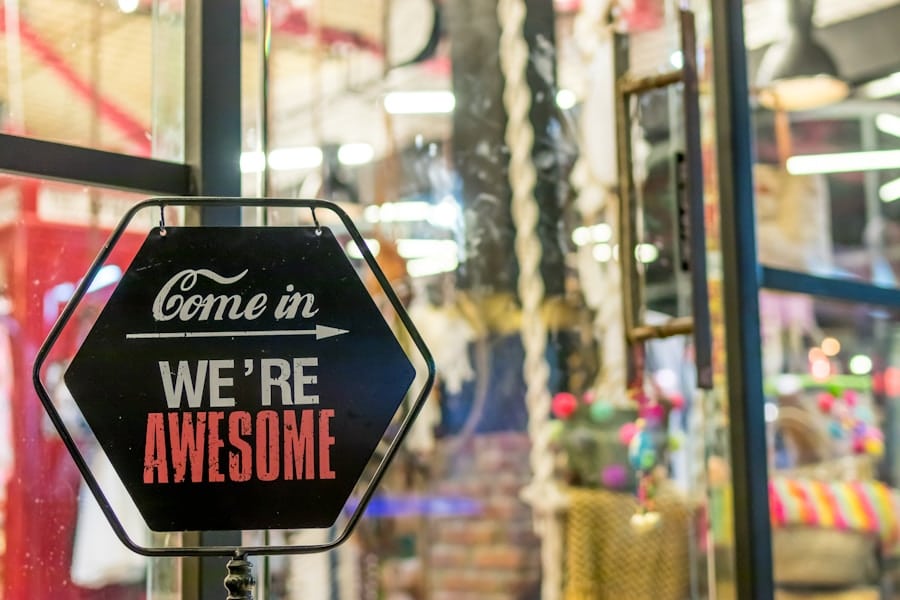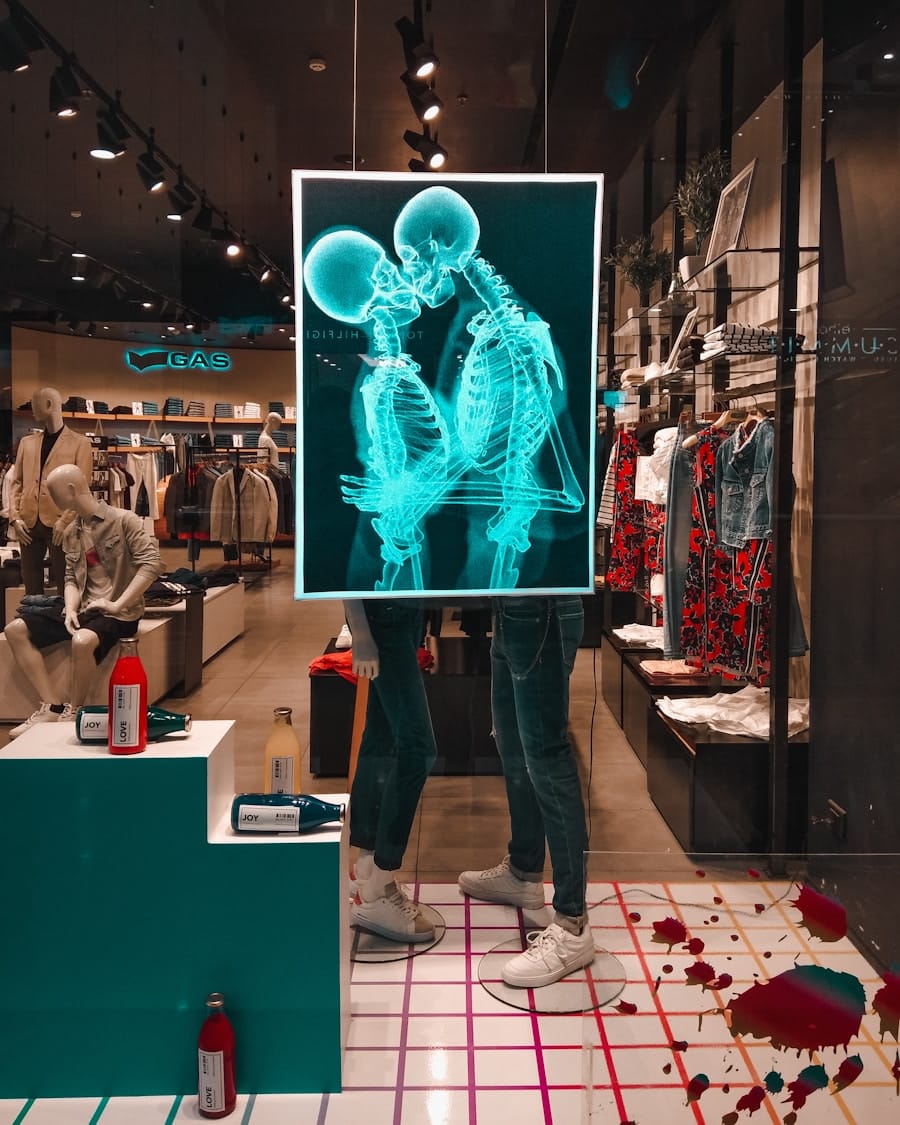Immersive branding represents a paradigm shift in how brands interact with consumers, moving beyond traditional marketing techniques to create a more engaging and interactive experience. This approach leverages technology and innovative storytelling to envelop consumers in a brand’s narrative, allowing them to experience the brand in a multi-dimensional way. Immersive branding can take various forms, including virtual reality (VR), augmented reality (AR), and experiential marketing events that invite consumers to participate actively rather than passively consume information.
By immersing consumers in a brand’s world, companies can foster deeper connections and enhance brand recall. The essence of immersive branding lies in its ability to create memorable experiences that resonate with consumers on a personal level. For instance, brands like IKEA have utilized AR technology to allow customers to visualize how furniture would look in their homes before making a purchase.
This not only aids in decision-making but also creates an emotional connection as consumers envision their lives enhanced by the brand’s products. Similarly, companies like Coca-Cola have employed experiential marketing campaigns that invite consumers to engage with the brand through interactive installations, further solidifying the idea that immersive branding is about creating a holistic experience that transcends mere product promotion.
Key Takeaways
- Immersive branding creates a multi-sensory experience for consumers, engaging them on a deeper level.
- Emotional connections are formed through storytelling, personalization, and shared values, leading to stronger brand loyalty.
- Building brand trust requires transparency, consistency, and delivering on promises to consumers.
- Fostering customer engagement involves creating interactive experiences and encouraging participation from the audience.
- Enhancing customer experience involves providing seamless and memorable interactions at every touchpoint.
Creating Emotional Connections
At the heart of effective branding is the ability to forge emotional connections with consumers. Immersive branding excels in this area by allowing brands to tell stories that resonate deeply with their audience. When consumers feel an emotional bond with a brand, they are more likely to develop loyalty and become advocates for that brand.
For example, Nike’s “Just Do It” campaign has consistently inspired individuals by showcasing real stories of athletes overcoming challenges. By immersing viewers in these narratives, Nike not only promotes its products but also aligns itself with values of perseverance and determination, creating a powerful emotional connection. Moreover, immersive branding can evoke nostalgia or aspiration, tapping into consumers’ memories and desires.
Brands like Disney have mastered this technique by creating experiences that transport individuals back to their childhood or inspire them to dream big. Through immersive storytelling in theme parks or films, Disney cultivates a sense of belonging and joy that resonates across generations. This emotional engagement is crucial; when consumers feel connected to a brand on an emotional level, they are more likely to choose that brand over competitors, even when faced with similar products or services.
Building Brand Trust
Trust is a cornerstone of any successful brand-consumer relationship, and immersive branding can play a pivotal role in establishing and nurturing this trust. By providing transparent and authentic experiences, brands can demonstrate their commitment to quality and customer satisfaction. For instance, brands that utilize VR technology to offer virtual tours of their manufacturing processes or behind-the-scenes looks at their operations can foster a sense of transparency that builds trust.
Consumers appreciate knowing where their products come from and how they are made, which can significantly influence their purchasing decisions. Additionally, immersive branding allows for real-time feedback and interaction, further enhancing trust. Brands that engage with consumers through social media platforms or interactive experiences can address concerns and answer questions promptly.
This two-way communication fosters a sense of community and shows consumers that their opinions matter. For example, beauty brands like Glossier have successfully built trust by actively engaging with their audience on social media, responding to comments, and incorporating customer feedback into product development. This level of engagement not only builds trust but also creates a loyal customer base that feels valued and heard.
Fostering Customer Engagement
Customer engagement is essential for driving brand loyalty and advocacy, and immersive branding provides unique opportunities to foster this engagement. By creating interactive experiences that invite participation, brands can capture consumers’ attention and encourage them to explore their offerings more deeply. For instance, brands like Red Bull have successfully engaged audiences through extreme sports events and competitions that allow fans to participate actively rather than merely observing from the sidelines.
This level of engagement transforms passive consumers into active participants in the brand’s narrative. Furthermore, gamification is another powerful tool within immersive branding that enhances customer engagement. By incorporating game-like elements into marketing strategies—such as rewards for participation or challenges that encourage exploration—brands can motivate consumers to interact with their products or services in new ways.
Starbucks has effectively utilized gamification through its loyalty program, where customers earn stars for purchases that can be redeemed for rewards. This not only encourages repeat purchases but also fosters a sense of community among loyal customers who share their progress and achievements.
Enhancing Customer Experience
The customer experience is a critical factor in determining brand success, and immersive branding can significantly enhance this experience by creating memorable interactions at every touchpoint. By leveraging technology such as AR and VR, brands can provide personalized experiences that cater to individual preferences and needs. For example, beauty retailers like Sephora have implemented AR technology in their mobile apps, allowing customers to virtually try on makeup products before making a purchase.
This not only enhances the shopping experience but also empowers customers to make informed decisions based on their unique preferences. Moreover, immersive branding can streamline the customer journey by providing seamless transitions between online and offline experiences. Brands that integrate digital elements into physical spaces—such as interactive kiosks or QR codes that lead to exclusive content—can create a cohesive experience that resonates with consumers across multiple channels.
For instance, Nike’s flagship stores often feature interactive displays that allow customers to learn more about products while also providing opportunities for hands-on engagement. This holistic approach ensures that customers feel valued and understood throughout their journey with the brand.
Encouraging Brand Advocacy
Brand advocacy occurs when customers become enthusiastic supporters of a brand, actively promoting it within their networks. Immersive branding plays a crucial role in encouraging this advocacy by creating experiences that inspire customers to share their positive interactions with others. When consumers feel emotionally connected to a brand through immersive experiences, they are more likely to recommend it to friends and family.
For example, brands like Airbnb have successfully cultivated a community of advocates by providing unique travel experiences that resonate with users’ desires for adventure and connection. Social media platforms serve as powerful amplifiers for brand advocacy in the context of immersive branding. When customers share their experiences—whether through photos, videos, or testimonials—they not only promote the brand but also create authentic content that resonates with potential customers.
For instance, Coca-Cola’s “Share a Coke” campaign invited consumers to find personalized bottles with their names on them, leading to widespread social media sharing as individuals showcased their unique finds. This not only amplified brand visibility but also fostered a sense of community among consumers who felt connected through shared experiences.
Sustaining Long-Term Customer Loyalty
Sustaining long-term customer loyalty requires ongoing effort and innovation from brands, and immersive branding provides the tools necessary to achieve this goal. By continuously evolving the immersive experience offered to consumers, brands can keep their audience engaged and invested over time. For instance, video game companies like Fortnite have successfully maintained player loyalty by regularly introducing new content, events, and collaborations that keep the gaming experience fresh and exciting.
This commitment to innovation ensures that players remain engaged and invested in the brand.
Brands that leverage data analytics to understand consumer preferences can tailor their offerings accordingly, creating a sense of exclusivity and relevance for each customer.
For example, Netflix utilizes sophisticated algorithms to recommend content based on individual viewing habits, ensuring that users feel understood and valued. This personalized approach not only enhances the overall experience but also encourages customers to remain loyal as they continue to receive tailored recommendations that align with their interests.
Measuring the Impact of Immersive Branding
To fully understand the effectiveness of immersive branding strategies, brands must implement robust measurement frameworks that assess the impact of these initiatives on consumer behavior and business outcomes. Key performance indicators (KPIs) such as engagement rates, conversion rates, and customer satisfaction scores provide valuable insights into how well immersive experiences resonate with audiences. For instance, brands can track metrics related to social media engagement following an immersive campaign launch to gauge its reach and effectiveness.
Moreover, qualitative feedback from consumers can offer deeper insights into the emotional impact of immersive branding efforts. Surveys, focus groups, and user testing sessions can help brands understand how consumers perceive their immersive experiences and identify areas for improvement. For example, after launching an AR campaign, a fashion retailer might conduct surveys to gather feedback on user experience and satisfaction levels.
This data not only informs future campaigns but also helps brands refine their strategies to better meet consumer expectations. In conclusion, measuring the impact of immersive branding is essential for continuous improvement and long-term success in an increasingly competitive marketplace. By leveraging both quantitative metrics and qualitative insights, brands can adapt their strategies to create even more engaging and meaningful experiences for consumers while driving business growth.
In a recent article on enicomp.com, the importance of using the best software for project management is highlighted. This article discusses how utilizing the right tools can streamline processes, increase efficiency, and ultimately lead to better results. Just like immersive branding plays a crucial role in long-term customer loyalty, having the right project management software can significantly impact the success of a business. To read more about the best software for project management, check out the article here.
FAQs
What is immersive branding?
Immersive branding is a marketing strategy that aims to create a deeply engaging and memorable experience for customers by integrating a brand into their daily lives through various sensory elements such as sight, sound, touch, and even smell.
How does immersive branding contribute to long-term customer loyalty?
Immersive branding creates a strong emotional connection between the customer and the brand, leading to increased brand loyalty. By providing a memorable and engaging experience, customers are more likely to develop a long-term relationship with the brand.
What are some examples of immersive branding techniques?
Examples of immersive branding techniques include experiential marketing events, interactive digital experiences, sensory branding through scents and sounds, and personalized customer interactions that create a sense of belonging and emotional attachment to the brand.
How can businesses implement immersive branding strategies?
Businesses can implement immersive branding strategies by understanding their target audience, creating unique and memorable brand experiences, leveraging technology to create interactive experiences, and consistently delivering on the brand promise to build trust and loyalty.
What are the benefits of investing in immersive branding for businesses?
The benefits of investing in immersive branding for businesses include increased brand loyalty, higher customer retention rates, differentiation from competitors, enhanced brand perception, and the ability to command premium pricing for products and services.



